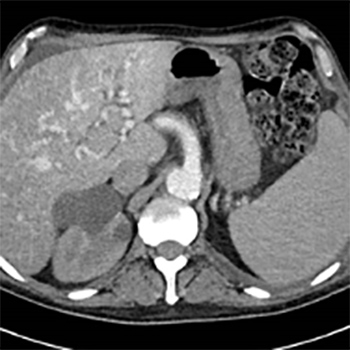Keywords
Rendu-Osler-Weber syndrome, arteriovenous malformations, epistaxis, congestive heart failure, chronic hepatic disease
Abstract
Rendu-Osler-Weber syndrome is a rare inherited syndrome with autosomal dominant transmission characterized by systemic arteriovenous malformations (AVMs) with multi-organ involvement. Its incidence is 1–2/100,000 and it is predominant in females (the male/female ratio varies from 1:2 to 1:4.5).Clinical manifestations and complications are related to recurrent bleeding and, in some cases, the development of end-organ failure. Management is mostly supportive care and it is essential to promote control of the disease as much as possible and screen eventual complications.
We describe the case of a 67-year-old male patient with Rendu-Osler-Weber syndrome admitted to the emergency department with decompensated heart failure due to acute anaemia because of severe epistaxis. During hospitalization, the patient progressed to acute-on-chronic liver failure with hepatic encephalopathy and an abdominal computed tomography scan showed multiple hepatic AVMs considered to be the cause of the chronic liver disease.
References

Views: 860
HTML downloads: 121
PDF downloads: 417
Published:
2020-08-03
Issue:
2020: Vol 7 No 11
(view)










